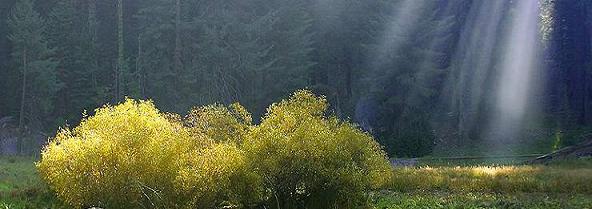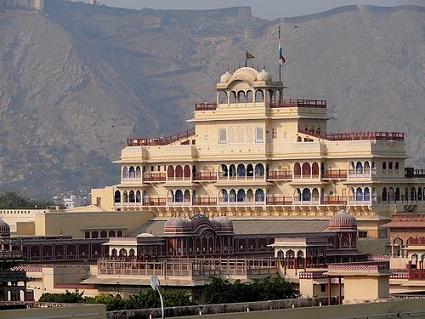|
The Mauryan Empire under Chandragupta rose to power in 321 BC. Two rock edicts in the Bairat district near Jaipur indicate that it was an important place in the time of Asoka Maurya (272-232 BC). After the death of Asoka. the Mauryan Empire disinte grated.
Duiha Rai, a prince of the kachchwaha family, fpunded Jaipur State, formerly, known as Dhundar arid Amer. The Kachchwaha, who came to Jaipur from Gwalior early in the 12th century. claimed to be solar descendants from Kusha, the son of Rama the Hero of the Ramayana.
The Rajput clans reached their pinnacle of power and glory between the 13th and 16th centuries. The period between the 16th and 18th centuries was marked by incessant conflicts between the Rajput rulers End the Mughals, the Muslim Imperial power.
The Kachchwaha Rajputs. however, were always on good terms with the Mughals and, in 1560, their chieftain, Biharimal, forged an alliance with Akbar, to save his state, for Amer was being threatened with extinction by its powerful neighbours. Akbar sealed the alliance by taking a princess of the Kachchwaha clan as his consort. Biharimal soon rose to eminence. So did his grandson Man Singh (1589-1614), who became one of Akbar's most trusted generals and, later governor of one of the Imperial provinces.
The best-known ruler of Amer is probably Sawai Jal Singh (Jai Singh II) who ruled from 699 to 1744. He built the city of Jaipur and founded the state of the same name.
The child-king was swift to resort, "Your Imperial Majesty, when a bridegroom takes his bride's hands in one of his own during the wedding, he is duty-bound to protect her all his life. Now that the emperor of India has taken both my hands in his right hand, what have I to fear With Your Majesty's long arms to protest me, what other arms do I need
The young prince's presence of mind overwhelmed Aurangzeb who immediately conferred on him title Sawai, meaning 'one quarter. Though a mere lad, he was more than a man (in intellect) - a quarter more than a man. Aurangzeb always remained a great admirer of Jal Singh's multifarious abilities and ready wit.
Jai Singh was a linguist but he was also deeply interested in mathematics and as tronomy. His scientific genius is evident in the unique giant stone instruments he devised for the huge open-air observatories which he built in Jaipur. Delhi Ujjain and Varanasi. But his greatest creation was the city of Jaipur itself.
Soon after he ascended the throne, Jal Singh decided to shift the seat of his government from Amer and drew up plans for constructing a new and larger city - a city which would be one of the best planned of his time. Plans of many contemporary Europeans citiee were referred to, and the plan for the new city Jaipur (named after Jal Singh) - made in consultation with renowned astronomers, mathematicians and architects. The 'pinking' of Jaipur, the first planned city of northern india, was the brainchild of Maharaj Ram Singh in the 19th century. He had wanted to do something special to honour visiting British Royalty.
More than 250 years have passed since the city was built but it is still enchanting, a curious blend of traditional colours and sophisticated sobriety. This is, however, turning modern quickly to present the image that is expected of a capital city. But Jaipur retains much of the old-world charm that shrouds the city in an Arabian Nights atmos phere, especially at night.
After India became independent, Jaipur merged with Jodhpur, Jaisalmer, Bikaner and other Rajput status and the state of Rajasthan was formed in 1956 with Jaipur as its capital.
|
|
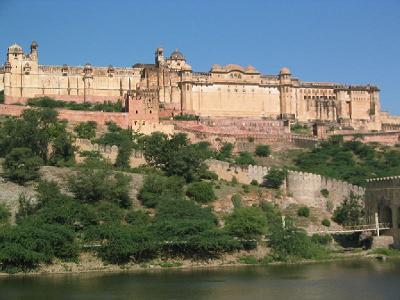
Forts, palaces, architectural marvels and tales of valour, all
in their own way, bear testimony to the glory that Jaipur is
and was just after it was conceived by Sawai Jai Singh in
1727. Located 262 kilometers from Delhi, jaipur was the first
planned city in northern India. Jaipur's history dates back to
the 12th century when the Kachchwaha clan o Rajputs arrived at
the old fort palace of Amber in the Aravalli Hills. The
Kachchwaha belonged to the Kshatriya, or the warrior caste of
Hindus, but they traced their origins back to the sun, via
Kusa who the twin son of the god Rama.
The people the Kachchwahas ousted were the Susawat Minas, who
became the hereditary loyal guards of what became one of the
largest and most valuable treasuries in India. From this base,
the Kachchwaha Rajputs, with their brilliant soldiering, and a
knack for lucrative alliances (even if that meant swallowingg
Rajput pride), amassed a fortune. It was the special
relationship the Amber rulers developed with the Mughals that
brought them real power, influence and wealth.
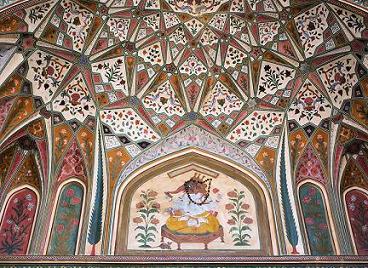
Arriving from Jaipur through the narrow pass in the hills, you
are presented with a view of the honey coloured Amber
fort-palace that conforms to every expectation of how a
romantic Rajupt forts should appear. It rambles over a rugged
hill, reflected in Maota Lake below. The odd elephant plods up
the ramparts road. In Amber village, which clusters around the
hill, gem-cutters smoothen and cut stones, the faithful go to
mosques and temples, and children run around the royal
chhatris (mausoleums) and decaying houses. A circle of
protective hills surrounds all this, and snaking up these
hills are crenulated walls punctuated by look-our posts. On
the highest ridge and overlooking the valley is Jaigarh Fort,
a spectacular display of defence. Inside Amber Fort, the
contrast is sharp, the grand painted gateway, the hall o
public audience that made even the Mughal emperor jealous,
pools and cascades to cool the air in summer heat, and the
hall o mirrors inlaid with tiny pieces of glass so that a
single flame creates a room o a thousand bejeweled stars.
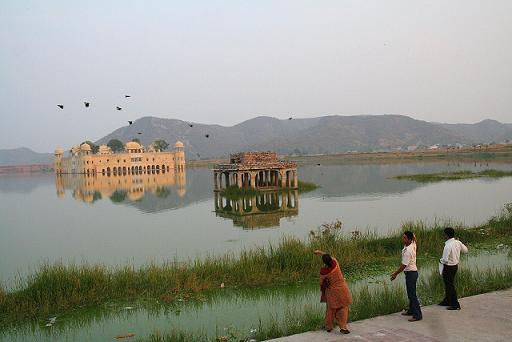
The power to create such a strong fort enclosing such beauty
was built up over several generations. Raja Bihar Mal made the
first move. Recognizing Mughal power, he paid homage to the
emperor Humayun and led a 5,000-strong army for him. Then he
made sure he was the first Rajput presented at Akbar's court.
His big chance came when Akbar made his first annual
pilgrimage to Ajemr, the burial place of a Muslim saint, which
lay in Kachchwaha territory. On a visit to Akbar's tent, Bihar
Mal gave his daughter to be the emperor's wife and his adopted
grandson, Man Sing, into royal service. The daughter finally
gave Akbar his first son, who became emperor Jahangir. The
next ruler, Bhawan Das, cemented the alliance and gave a
daughter to be Jahangir's wife. Then came the two rulers who
built Amber. Man Singh, a leading general under both Akbar and
Jahanir, and Jai Sing I, a military and diplomatic genius who
brought the house of Amber to its apogee at the Muhal court,
On the throne aged 11, Jai Singh I was soon commanding a
Mughal force for Jahangir, then fought all over the Mughal
empire for Shah Jahan and finally backed the right side in the
war for succession and became emperor Aurangezeb's most prized
Rajput commander. All this time, the Kachchwaha coffers were
filling with prizes, rewards and booty. Three rulers later,
Jai Singh II, another child prodigy, came to the throne. The
young lad quickly impressed the 71-year-old Aurangzeb who
awarded him the title 'Sawai', meaning one-and-a-quarter. Even
today, the flag flying above the City Palace in Jaipur has an
extra, quarter sized one next to it. Jai Singh II, having
proved his soldiering ability further enriched his coffers and
fulfilled his other passions - the arts and sciences. The
impressive giant stone instruments which he devised for the
open-air observatories at Jaipur, Delhi, Ujjain and Varanasi
stand testimony to his scientific prowess. After ascending the
throne, he shifted the capital from Amer. He studied the
architecture of several European cities and drew up plans for
constructing a larger and well-planned city. He consulted his
best mathematicians, astronomers and the Silpa Sastra Sastra,
a traditional Hindu architectural treatise before making the
the blueprint for the new city.
After building close bonds with the Mughas and sure that there
could be no danger to his throne, Sawai Jai Singh, envisioned
his dream project, the building of Jaipur. the foundation
stone was laid by him in 1727 and an eminent architect,
Vidyadhar Bhattacharaya, was asked to desing the 'Pink City. '
It was a two-in-one compliment as 'Jai' means victory and was
also the ruler's first name. That it was later chosen as the
capital of Rajasthan formed from the amalgamation of various
kingdoms, was a tribute to both Jai Singh and Bhattaccharya.
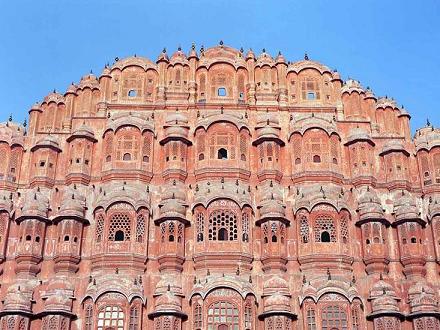
The city was planned in a grid system of seven blocks of
buildings with wide straight avenues lined with trees, with
the place set on the north side.Surrounding it are high walls
pieced with ten gates. The site of the shops were chosen after
careful planning and they are arranged in nine rectangular
city sectors (chokris). Jaipur was the first sizable city in
north India to be built from scratch, though the famous pink
colour symbolizing welcome', came later when Ram Singh II
received the Prince of Wales in 1876. The colour was chosen
after several experiments to cut down the intense glare from
the reflection of the blazing rays of the sun. To this day,
the buildings are uniformly rose pink. After Jai Singh died in
1773, a battle for succession followed and the Marathas and
jats who were making advances in various parts of the country
also decided to try their luck and Jaipur lost large chunks of
territory with the ruler playing second fiddle the the fast
growing East India Company. In 1818, several maharajas of the
north-west princely states and Maharaja Jagat Singh of Jaipur,
signed a treaty with the British under which they could
continue to have control of their states, but would be
collectively supervised by the British under a new name,
Rajputana. After Independence, Jaipur, Jodhpur, Jaisalmer,
Bikaner and other Rajpur states merged to form the state of
Rajasthan with Jaipur as the capital. And even after 273 years
after it was founded, jaipur has retained its unique flavour
and old world charm. It is a bustling trading centre with
colorfully set bazars, people sporting blood-red turbans,
puppet sellers, and festivals and fairs. |
